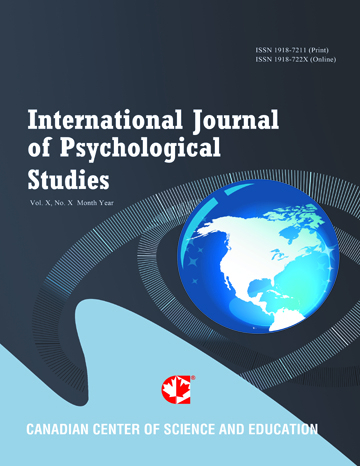Exploring the Role of Art-Making in Recovery, Change, and Self-Understanding---An Interpretative Phenomenological Analysis of Interviews with Everyday Creative People
- Anjelique Stevenson-Taylor
- Warren Mansell
Abstract
Most creativity theorists consider artists as “agents of control”, capable of overcoming and controlling
psychological distress. However, studies have yet to map the “healing” tendency for “everyday creative people”
in detailing the process’ effects on perception and change. This study was aimed to examine this process via a
phenomenological and Perceptual Control Theory perspective (PCT: see Powers, W. T. (1973). Behaviour: The
control of perception. Chicago: Aldine). We recruited and interviewed eleven participants who had engaged in
art-making and experienced recovery from psychological distress. Interpretative Phenomenological Analysis was
used to identify themes between participant responses, generated from self-created semi-structured interview
schedules following Smith and Osborn’s technique (IPA: see Smith, J. A., & Osborn, M. (2008). Interpretative
phenomenological analysis. In J. A. Smith (Ed.), Qualitative psychology: A practical guide to research methods,
2nd edition, (53-80). London: Sage). Data analysis identified six superordinate themes: 1) “the process of creating
as a goal-oriented focus”, 2) “internalising process and product”, 3) “awareness shift and self-focus”, 4)
“emotion regulation”, 5) “goal change, bonding, and conflict resolution”, and 6) “feelings and perceptions within
the art-making process”. Disconfirming Case Analysis and participant feedback also indicated a seventh theme: 7)
“the ‘superficial’ creative process”. The results were interpreted to indicate that art-making involves the
purposeful creation of perceptual experience to fulfil higher-order goals and values. The creative process is also
a learning process which instigates and promotes positive affect, enhances skills, and facilitates change in
higher-order goals. We consider these interpretations in the light of the components of PCT.
- Full Text:
 PDF
PDF
- DOI:10.5539/ijps.v4n3p104
Journal Metrics
1. Citations (March 2025): 10975
3. i10-index (March 2025): 233
For details about the Journal Metrics, please visit the Google Scholar website.
Index
- AcademicKeys
- CNKI Scholar
- Elektronische Zeitschriftenbibliothek (EZB)
- Excellence in Research for Australia (ERA)
- GETIT@YALE (Yale University Library)
- Harvard Library E-Journals
- JournalSeek
- JournalTOCs
- LOCKSS
- MIAR
- Open Access Journals Search Engine(OAJSE)
- Open J-Gate
- PKP Open Archives Harvester
- SHERPA/RoMEO
- Standard Periodical Directory
- The Keepers Registry
- UCR Library
- Ulrich's
- Universe Digital Library
- WorldCat
Contact
- Barbara SunEditorial Assistant
- ijps@ccsenet.org
